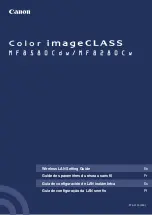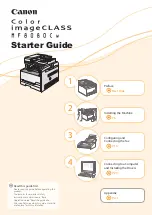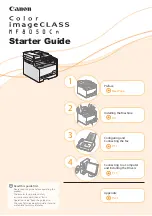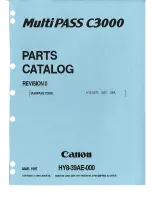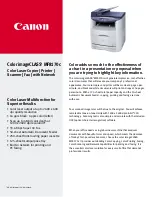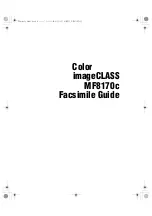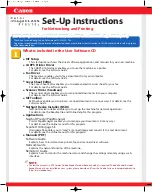
Diagnostic aids
3-67
7525-63
x
Go Back
Previous
Next
4.
When the document sensor is actuated, a signal is sent to flatbed to move the CCD imaging unit to the
ADF scan area. When the CCD reaches the ADF scan area, a calibration is performed on the CCD.
5.
The media is advanced to ADF scan sensor which is located by the takeaway roll. If the paper does not
reach the ADF scan sensor in a predetermined length of time a jam error will be generated.
6.
When the ADF scan sensor is actuated the paper advances to the scan area. While the paper is advancing
to the scan area, the ADF motor generates pulses which are stored in an on-board counter. These counts
along with the ADF scan sensor ensure that the media is travelling at the correct speed through the scan
area. The speed the document travels through the ADF scan area is dependent on the image DPI
specified by the user.
7.
After a predetermined number of counts, the media reaches the scan area and the image acquisition
process is initiated. While the image acquisition process is executing, the ADF scan sensor is being polled
to determine if the trailing edge of the media has reached the sensor.
8.
Once the trailing edge of the scan media has reached the ADF scan sensor, that sensor goes to the off
position. After the ADF scan sensor is switched off, the image acquisition process continues for a
predetermined length of time.
9.
When the image acquisition process is completed, the trailing edge of the media continues to the reverse
point. If the scan job is simplex, only the media continues to the exit roller and exits the ADF.
10.
If the scan job is a duplex scan job, a solenoid on the ADF is actuated when the trailing edge of the media
reaches the reverse point. This solenoid moves a diverter gate to the down position and engages a
reversing gear on the exit roll.
11.
The reversed exit roll pulls the paper back into the ADF. The transport roll then moves the media to the
duplex sensor. When the duplex sensor is actuated, the exit roll stops. Also, the duplex sensor indicates
that this is the second side of the media to be scanned.
12.
After actuating the duplex sensor, the transport roll moves the media to the take away roll and the ADF
scan sensor. Like the first pass of the media, the image acquisition process is repeated for the second side
of the media.
13.
When the trailing edge of the media reaches the reverse point the second time, the solenoid again moves
the diverter gate to the down position and reverses the exit roll. The paper goes back into the ADF unit for
a third time. The paper passes through the paper path, but no imaging occurs. This pass is to turn the
paper over to the original side up. On the third pass of the media trailing edge over the reverse point, the
solenoid is not actuated and the paper passes out of the ADF.
Color theory
What is RGB color?
Red, green, and blue light can be added together in various amounts to produce a large range of colors
observed in nature. For example, red and green can be combined to create yellow. Televisions and computer
monitors create colors in this manner. RGB color is a method of describing colors by indicating the amount of
red, green, or blue needed to produce a certain color.
What is CMYK color?
Cyan, magenta, yellow, and black inks or toners can be printed in various amounts to produce a large range of
colors observed in nature. For example, cyan and yellow can be combined to create green. Printing presses,
inkjet printers, and color laser printers create colors in this manner. CMYK color is a method of describing colors
by indicating the amount of cyan, magenta, yellow, and black needed to reproduce a particular color.
How is color specified in a document to be printed?
Software programs typically specify document color using RGB or CMYK color combinations. Additionally, they
allow users to modify the color of each object in a document. For more information, see the software program
Help topics.
Summary of Contents for X548 Series
Page 10: ...x Service Manual 7525 63x Go Back Previous Next...
Page 15: ...Notices and safety information xv 7525 63x Go Back Previous Next...
Page 16: ...xvi Service Manual 7525 63x Go Back Previous Next...
Page 22: ...xxii Service Manual 7525 63x Go Back Previous Next...
Page 44: ...1 22 Service Manual 7525 63x Go Back Previous Next...
Page 116: ...2 72 Service Manual 7525 63x Go Back Previous Next...
Page 303: ...Locations 5 3 7525 63x Go Back Previous Next Print engine interior view...
Page 316: ...5 16 Service Manual 7525 63x Go Back Previous Next HVPS...
Page 318: ...5 18 Service Manual 7525 63x Go Back Previous Next LVPS...
Page 324: ...6 4 Service Manual 7525 63x Go Back Previous Next...
Page 326: ...7 2 Service Manual 7525 63x Go Back Previous Next Assembly 1 Covers 7 11 9 8 1 2 3 4 5 6 10...
Page 330: ...7 6 Service Manual 7525 63x Go Back Previous Next Assembly 3 Operator panel 1 2 3 4 7 8 5 6 9...
Page 332: ...7 8 Service Manual 7525 63x Go Back Previous Next Assembly 4 Paperpath 5 2 4 7 6 1 3 8 9 3 10...
Page 336: ...7 12 Service Manual 7525 63x Go Back Previous Next Assembly 6 Electronics 2...
Page 344: ...I 4 Service Manual 7525 63x Go Back Previous Next...
Page 347: ...Part number index I 7 7525 63x Go Back Previous Next...
































